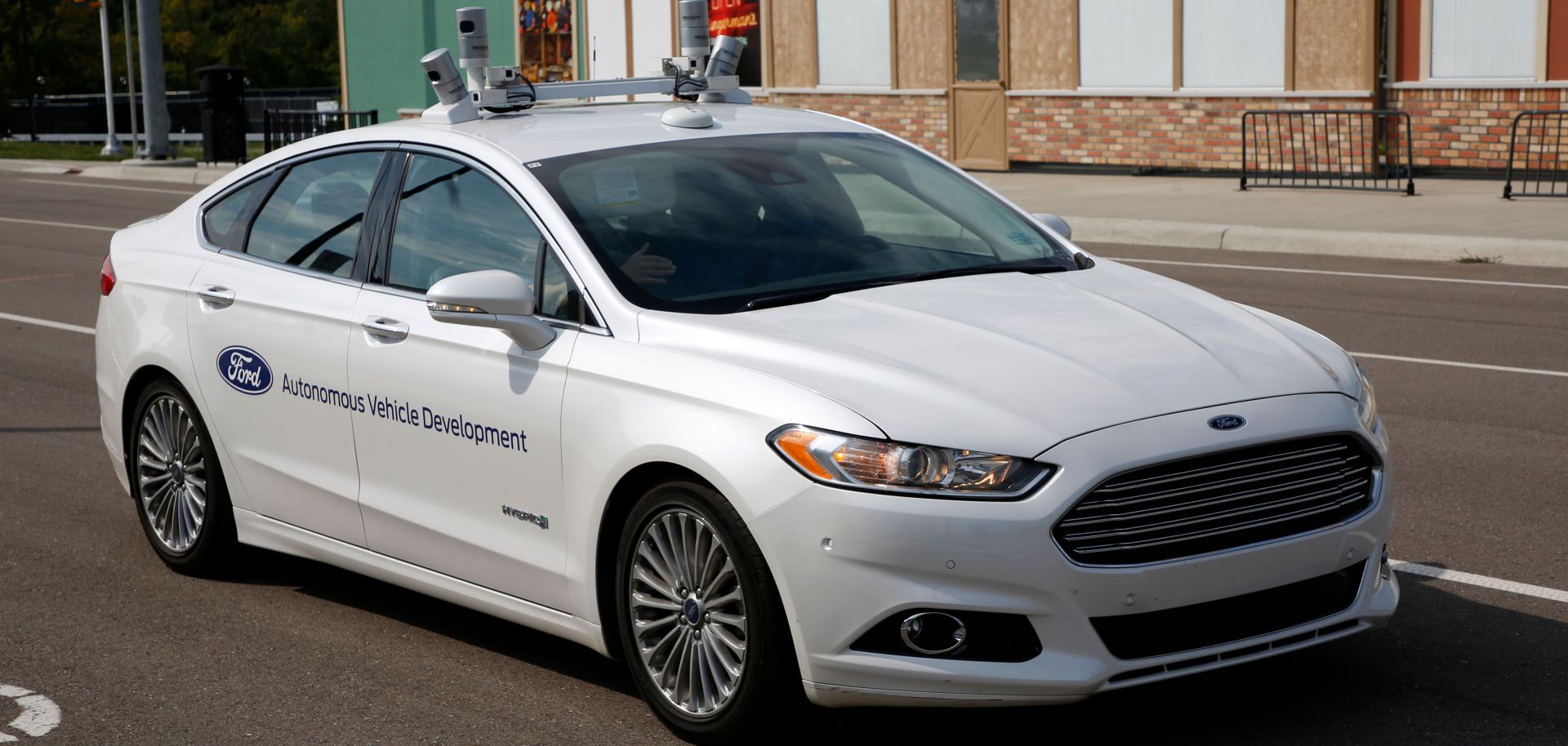ASSESSMENTS
Driving Consumers Toward Automated Vehicles
Nov 3, 2017 | 09:00 GMT

Ford Motor Co. is just one of several companies hoping to bring automated vehicles onto the roadways. But the technology required to operate self-driving cars is evolving faster than public policy and opinion are.
(JEFF KOWALSKY/AFP/Getty Images)
Highlights
- Recent technological developments will keep automated vehicles on track for a limited commercial launch in the 2020s.
- Despite the advancements, however, policy initiatives to facilitate the use of automated vehicles — including regulations over the technology and over data privacy — will continue to lag behind.
- Public acceptance of automated vehicles will be the biggest obstacle to their incorporation into the global fleet and will probably limit their use over the next 10-15 years.
Subscribe Now
SubscribeAlready have an account?
